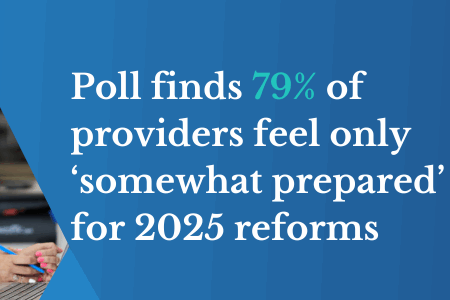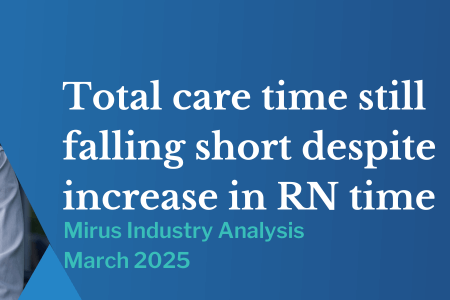Managing risk to meet 24/7 RN Responsibilities
May 3, 2023 | Aged Care Reform

By Katie Airey, Quality, Risk and Compliance Lead & Taranjot Minhas, Consultant
On 18 April 2023, The Aged Care Quality and Safety Commissioner, Janet Anderson, led a webinar discussing the new 24/7 registered nurse responsibilities for aged care providers in Australia. This new requirement includes having a registered nurse on site 24/7 from 1 July 2023 and achieving target average of 200 care minutes from 1 October 2023.
The Commission confirmed during the webinar that they will take a sensible and proportionate approach to assessing each service, which will be informed by assessment and monitoring of risks.
When considering risks, it’s important that organisations consider the risk measures that the Commission will take into consideration when determining the severity of risks, these measures include, but are not limited to:
- Total care hours
- Frequency and patterns of gaps in the reporting period for your workforce
- Number and care needs of consumers
- Rationale for reported gaps and alternative clinical care arrangements the organisation has in place
- SIRS reporting patterns
- Compliance outcomes
- Complaints (particularly regarding clinical care and workforce)
- History of non-compliance with the Quality Standards and
- Quality Indicator data.
To make sure providers are meeting the 24/7 registered nurse responsibility, providers should ensure that they have a sound clinical governance framework, that supports their workforce and enables optimal clinical outcomes for consumers.
A range of strategies will be expected, and some helpful pointers are listed below:
- Consider what alternative resources (other than a registered nurse) are available within your community and embed a range of strategies that can be utilised by your workforce, during routine care AND should a sudden deterioration occur.
- Ensure workforce are well equipped with localised knowledge, understand clinical escalation policies, processes and pathways, and are aware of availability of local health providers.
- Ensure resident emergency contact information is up to date, with clear documentation of primary and secondary contacts in case of unfamiliar workforce.
- Conduct and document workforce and succession planning for areas with workforce limitations so that there is a clear actionable plan in case of unforeseen shortages – also include the staff when conducting this succession planning. This may include multiple alternative plans in case certain plans fall through.
- Regularly evaluate your onsite, co-located, and offsite arrangements for clinical care provision (including pain, falls, behaviours, palliative, end-of-life care needs) to avoid gaps in service, such as onsite workforce upskilling to be able to support offsite workforce and systems access for offsite workforce.
- Build ongoing relationships with outreach services and other local health providers to leverage and maximise when needed.
- Regularly evaluate your technology resources, internet, systems, and telehealth options to identify and manage any gaps in service.
- Last but not least, empower workforce to identify gaps, report upwards, and address these concerns through best-practice policies and procedures that come back down to each and every team member through ongoing effective communications.
Employing the above strategies allows providers to minimise the risk and burden of stressful situations on their workforce, which can avoid further exacerbating signs of fatigue and burnout in your teams.
We can work with you to undertake a gap analysis, embed processes, and support your team through the aged care reforms.


